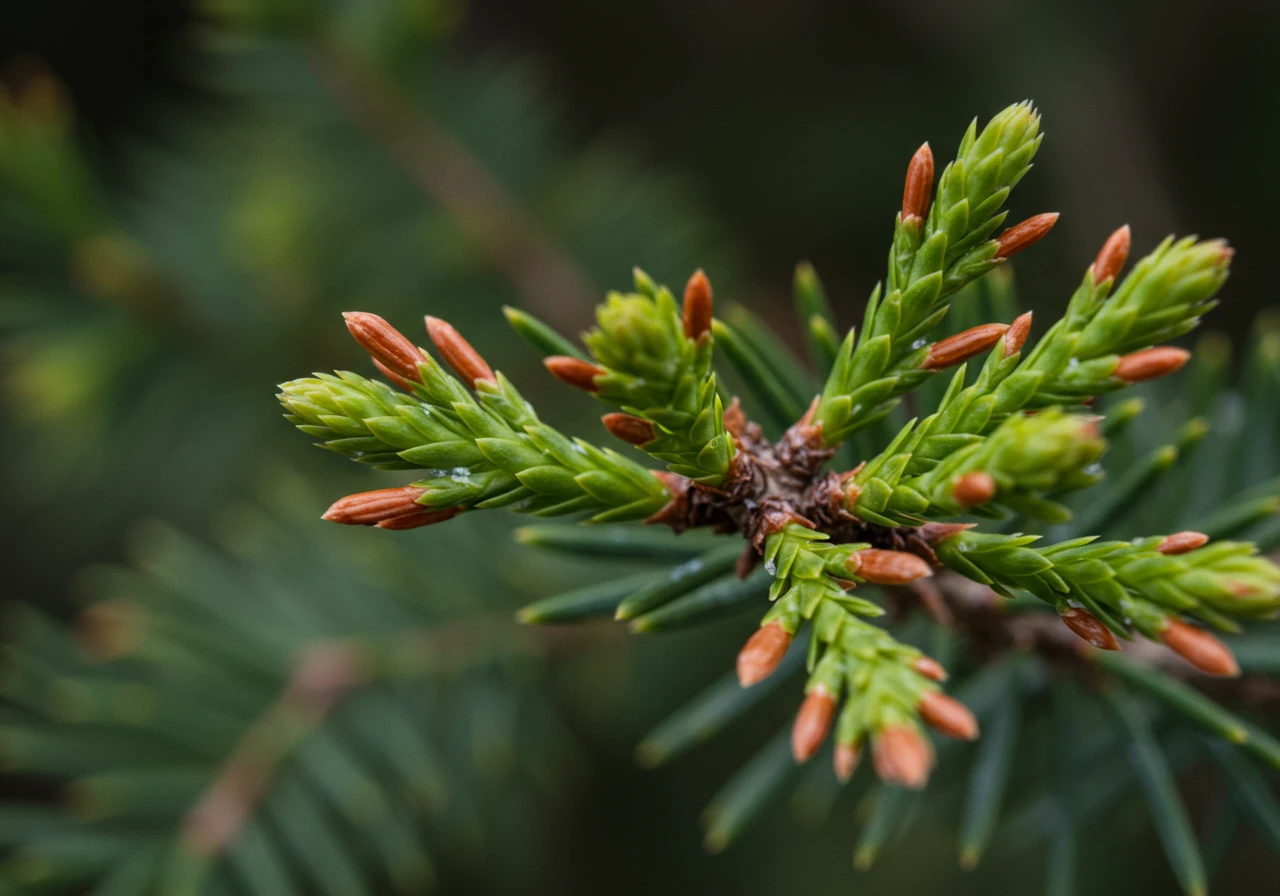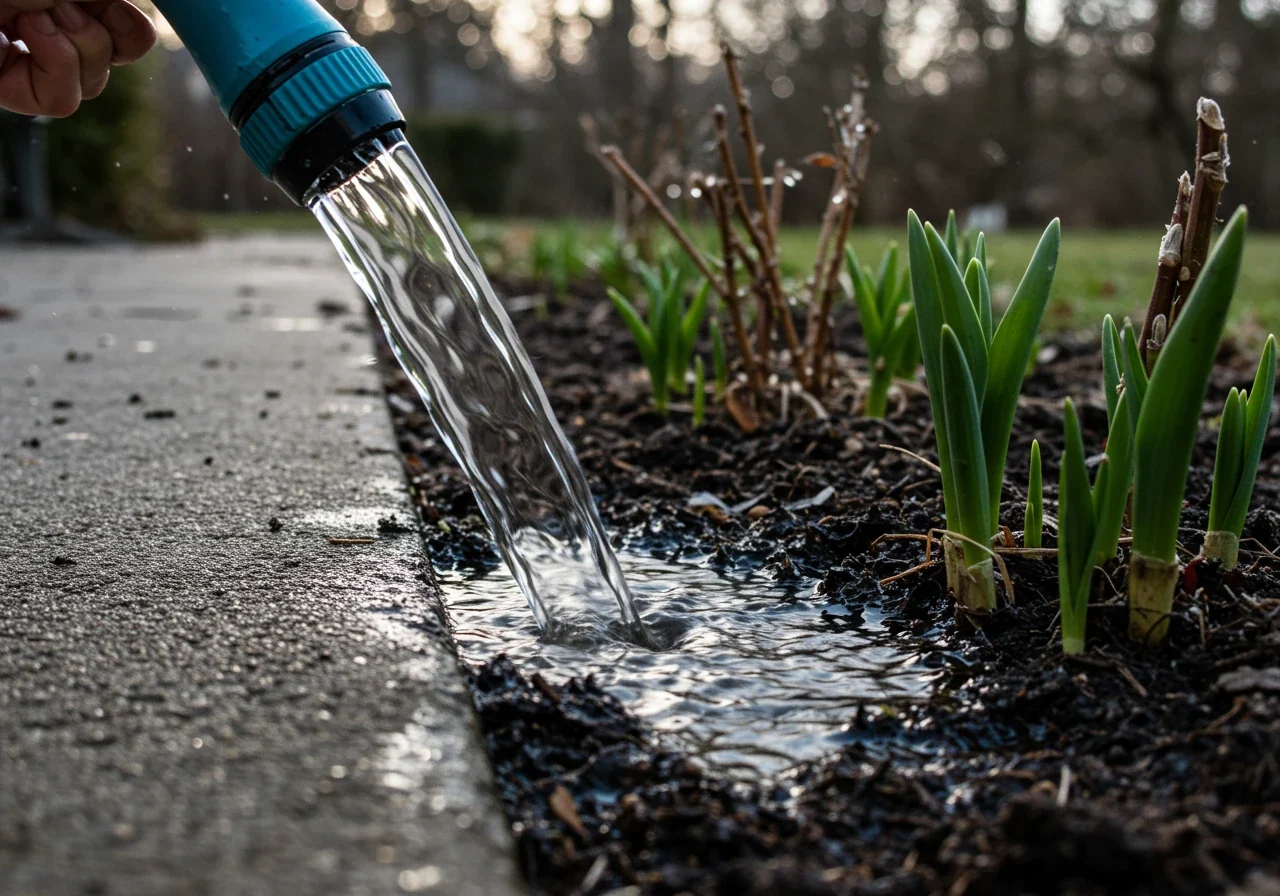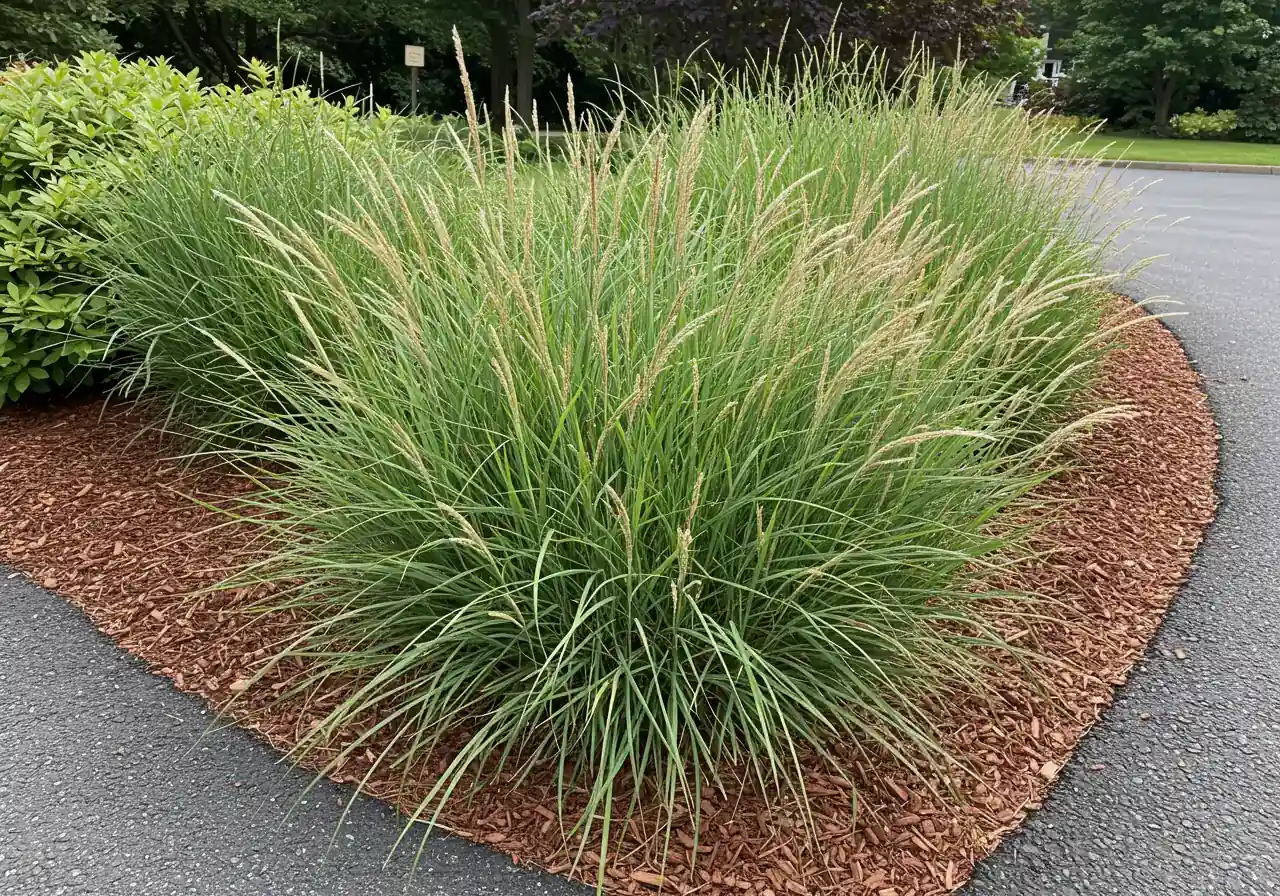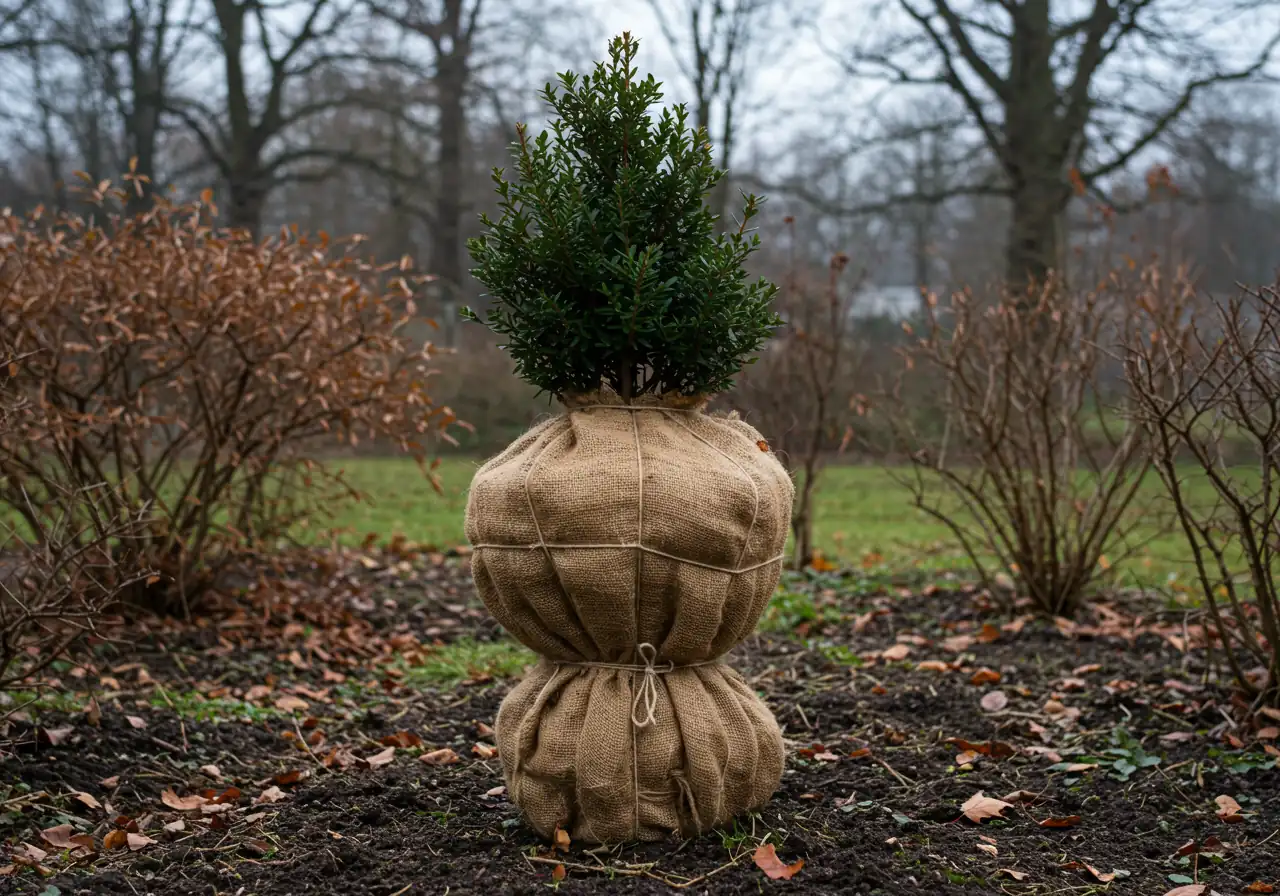Garden Recovery Richmond: Repair Road Salt Plant Damage
Quick Guide to Fixing Road Salt Damage
- Identify Damage: Look for brown/yellow leaves (scorch), dead patches near roads, stunted growth, especially in spring.
- Flush Soil: Deeply water affected areas in early spring to wash away salt.
- Amend Soil: Add compost to improve structure and dilute remaining salt.
- Prune Wisely: Remove clearly dead wood, but wait to prune potentially damaged branches.
- Protect Next Winter: Use burlap wraps or snow fencing on vulnerable plants in fall.
- Choose Tolerant Plants: Select salt-resistant species for roadside areas.
Experiencing salt damage? Request a quote for professional assessment and recovery services.
Introduction: Uh Oh, Ottawa! Is Road Salt Ruining Your Richmond Garden?
Ah, spring in the Ottawa area! The snow finally melts, the birds are singing (or at least squawking!), and we can *almost* forget about those icy commutes. But wait… as you gaze lovingly at your Richmond property, dreaming of lush green lawns and vibrant flower beds, do you notice something… *off* near the road? Is that patch of grass looking suspiciously brown and crunchy? Are those shrubs that bravely faced the winter looking a little worse for wear?
If you're nodding along, you might be dealing with the unwelcome aftermath of winter: road salt damage. While we're grateful for the salt trucks keeping roads clear through snowy neighbourhoods like Richmond and nearby Barrhaven, the salty spray and runoff can be a real downer for our gardens and landscaping. That salt gets into the soil, messes with plant roots, and can leave your front yard looking stressed and thirsty, even after a spring shower. It’s a frustrating side effect of our long winters! But don't worry, your dream lawn and garden aren't necessarily doomed. Understanding the problem is the first step to fixing it. Consider reaching out to Clean Yards on Google for local insights.
The Salty Truth: How Winter Road Maintenance Affects Your Plants
Okay, let's peel back the layers (like an onion, but less likely to make you cry... hopefully!) and dig into *how* that winter road salt actually messes with your precious plants. It's not just about looking ugly; salt wages a bit of a sneaky war on your garden greenery.

Think of it like this: plants drink water through their roots using a process called osmosis. They naturally try to balance the water inside their cells with the water in the soil. But when the soil is full of dissolved salt, it basically tricks the plant. The salty water outside the roots is *so* concentrated that the plant roots can't pull in the freshwater they need. It's like being incredibly thirsty but only having saltwater to drink – it actually dehydrates you! This 'chemical drought' stresses the plant, even if the soil *looks* wet.
Salt also plays dirty *inside* the plant. If the plant *does* manage to absorb some salty water, the sodium and chloride ions (the building blocks of salt) can travel up to the leaves and stems. Once there, they build up to toxic levels, interfering with important processes like photosynthesis (how plants make food) and causing direct damage to plant tissues.
And let's not forget the soil itself! Salt can mess up the soil structure, especially the heavy clay soils common around Ottawa, like in Osgoode or parts of Manotick. It breaks down the nice little clumps that allow for good drainage and air circulation. This leads to compacted soil where roots struggle to grow, and water doesn't drain properly. Over time, salt buildup can also displace essential nutrients plants need, like potassium and magnesium, making them unavailable for your plants to use. Understanding your soil is key; for instance, these Osgoode clay soil garden care and fall tips highlight challenges specific to denser soils which salt can worsen. Proper soil preparation techniques can mitigate some of these structural issues over time.
So, what should you be looking for this spring? Keep an eye out for these tell-tale signs of salt stress, especially on plants closest to roads or sidewalks:
- Leaf Scorch: Browning or yellowing along the edges or tips of leaves, particularly on evergreens like cedars and pines. It might look like they got burnt.
- Stunted Growth: Plants might seem slow to leaf out or just don't grow as vigorously as they should. New shoots might be smaller than usual.
- Twig Dieback: You might see dead twigs and branches, especially on the side facing the road. Sometimes whole sections of a shrub just don't green up. If you need to trim this away, make sure you know the best approach; consider reviewing these Richmond summer shrub pruning tips for healthy gardens for general guidance (though timing differs for spring cleanup). Always use clean tools to avoid spreading potential disease, a practice highlighted in this guide to keep Greely garden tools sharp, clean, and prevent disease.
- Delayed Bud Break: Flower or leaf buds might open much later than on unaffected plants, or not open at all.
- Lawn Damage: Dead, brown patches of grass along driveways and roadsides are classic signs.
Preventing damage starts long before winter ends. Good overall plant health, often stemming from smart Nepean fall garden prep for colour and winter resilience, can help plants better tolerate stress. But if you're seeing widespread issues now, understanding these symptoms is the first step to recovery. If the salt damage looks severe across your property, getting professional advice or help might be necessary; specialized landscaping and garden care services can assess the situation and recommend solutions like soil testing or remediation.
Damage Detective: Assessing the Salty Situation in Your Garden
Alright, let's put on our detective hats (maybe a gardening hat is more fitting?) and investigate the scene of the crime – potential salt damage in your yard. It's especially important if you live near busy roads in areas like Richmond, Osgoode, or Metcalfe. Don't worry, you don't need a magnifying glass, just keen eyes and a little know-how. Here’s how to assess the salty situation:
- Timing is Key: The best time to play detective is early to mid-spring, just as your plants are starting to wake up from their winter nap. This is when symptoms like delayed growth or leaf damage become most obvious.
- Focus Your Search: Salt damage is usually worst in areas closest to where salt was applied – think along the edge of your driveway, sidewalk, or the road itself.
- Examine the Evidence (The Plants):
- Grass: Look for tell-tale dead, brown patches right along paved edges.
- Evergreens: Check for brown, burnt-looking needle tips, especially on the road-facing side.
- Deciduous Shrubs & Trees: Note slow bud opening, dead twigs (especially road-facing), or small/distorted leaves.
- Inspect the Soil: Look for a whitish crust when dry. Check if the soil seems unusually hard or compacted near affected areas.
- Rule Out Imposters: Salt damage typically follows spray/runoff patterns. Random damage or issues far from salted areas might indicate other problems (winter kill, pests, disease). Our team (learn more About Us) can help differentiate.
- Create a "Damage Map": Sketch your yard, mark affected areas, and rate severity. This helps plan recovery. For widespread issues, consider comprehensive Ottawa property cleanup services or area-specific help like a Manotick garden clean up service or even a Marionville property cleanup service. Assessing damage also informs future preventative material selection for plants or barriers.
By taking these steps, you'll get a much clearer picture of how much salty trouble winter left behind in your Ottawa garden.
Operation Garden Rescue: Immediate Steps for Spring Recovery
Okay, team, let's launch "Operation Garden Rescue"! Your Ottawa garden might look a bit worse for wear after battling winter's salty onslaught, especially if you're near well-travelled roads in areas like Barrhaven or along routes connecting to places like Kars. But don't despair! Here are the immediate first-aid steps you can take this spring to help your plants recover:

Step 1: Give it a Good Drink (The Right Way!)
Think of this as rinsing the salt away. As soon as the ground thaws and drains reasonably well, give the affected areas a deep, slow soaking with fresh water. Aim for about 5-6 cm (2 inches) of water over a few hours. Repeat this a couple of times, spaced a few days apart, to flush salts below the root zone. This is vital for heavy clay soils. A thorough Ottawa Garden Clean Up Service can include this step.
Step 2: Prune with Patience
Prune clearly dead, brittle wood. Wait on potentially damaged branches to see if buds emerge later. For evergreens with brown tips, avoid heavy pruning; let the plant try to outgrow the damage or lightly trim for shape after new growth starts. Proper pruning is part of ongoing garden maintenance.
Step 3: Amend the Soil (Like Adding Vitamins!)
After flushing, spread 5-10 cm (2-4 inches) of good compost over the soil and gently work it in. Compost improves structure, adds microbes, and dilutes salt. Choosing the right amendment is key; see our guide on material selection.
A Quick Note on Gypsum: Gypsum can help displace sodium in heavy clay soil if a test confirms high levels, but use it cautiously. If unsure, consult professionals who offer services like a Metcalf property cleanup service or a general Ottawa yard cleanup service.
These immediate steps give your salt-stressed plants a fighting chance. Be patient; recovery takes time!
Understanding Salt Tolerance
Not all plants react the same way to salt. Some are naturally more resilient. Choosing the right plants for areas prone to salt spray (near roads, driveways) is the most effective long-term strategy.
Relative Salt Tolerance Examples:
Consider grasses like Feather Reed Grass, shrubs like Rugosa Rose, or certain Oaks for high-salt areas.
Preventing Salt Damage
Proactive steps taken in the fall can significantly reduce spring salt damage:
- Physical Barriers: Use burlap wraps for sensitive evergreens or install temporary snow fencing along road edges.
- Smart Design: Plant tolerant species as a buffer, use raised beds, or create berms to divert runoff.
- Snow Management: Pile snow away from vulnerable plants and garden beds.
- Eco-Friendly De-icers: Use less product, opt for sand for traction, or choose less harmful alternatives like CMA on your own property.
Planning these protections can be part of fall cleanup services, like those offered for Metcalf garden clean up.
Key Recovery Actions
If your garden is already showing signs of salt stress, focus on these key actions:
- Flush Thoroughly: Deep watering in early spring is crucial to leach salts.
- Amend Soil: Add compost to improve soil health and dilute salt.
- Prune Deadwood: Remove brittle, dead branches after giving plants time to show new growth.
- Monitor & Wait: Be patient. Recovery takes time. Avoid harsh fertilizers initially.
- Consider Replacement: For severely damaged or repeatedly affected plants, replacement with tolerant species may be best. Explore options during a garden install consultation.
Building Resilience: Long-Term Health and Salt-Tolerant Planting
Okay, you’ve played garden paramedic. High five! But the real win is building a landscape that tolerates winter's salty attitude. This is about the long game for a healthier garden, crucial in areas like Manotick or Barrhaven.

Fertilizing? Easy Does It!
Hold off on strong chemical fertilizers right after flushing. Wait for clear signs of new growth, then use slow-release or organic options. Focus on overall soil health. Good lawn care practices emphasize balanced nutrition.
Keep Loving Your Soil
Annual additions of compost improve structure, drainage, and buffer against salt. Healthy soil grows resilient plants. This can be part of your annual Ottawa Yard Cleanup Service. Track progress via tools like the Clean Yards Customer Portal.
The MVP: Salt-Tolerant Planting
This is the *most effective* long-term strategy. Choose plants that handle salty conditions better for high-risk zones.
- Grasses: Switchgrass, Feather Reed Grass.
- Shrubs: Rugosa Rose, Potentilla, certain Junipers.
- Trees: Norway Maple (use cautiously), Oaks, Locusts.
Choosing right reduces maintenance, minimizing the need for intensive interventions like a full Marionville Garden Clean Up Service focused on salt damage. Place tolerant species closest to salt sources.
Feeling overwhelmed? Book an estimate with our team for personalized recommendations.
Timeline: From Winter Damage to Spring Recovery
Late Winter / Early Spring
Salt applied to roads/walkways. Spray and runoff accumulate in soil near edges.
Early Spring (Thaw)
Action: Begin flushing soil with deep watering as soon as ground thaws and drains.
Mid-Spring
Assess damage: Look for leaf scorch, dieback, lawn patches. Compare growth to unaffected plants.
Mid- to Late Spring
Action: Apply compost. Prune clearly dead wood. Wait on questionable branches.
Late Spring / Early Summer
Monitor recovery. Decide if replacement is needed for non-recovering plants. Consider mulching and edging to protect soil.
Fall
Action: Plan & implement preventative measures: burlap wraps, barriers, consider tolerant plants for next year.
Proactive Protection: Shielding Your Garden from Next Winter's Salt Assault

Okay, you've survived the spring recovery! Now, let's think ahead like a savvy squirrel. A little proactive protection this fall goes a *long* way, especially in busy Ottawa areas like Nepean or Greely. Let’s build Fort Garden!
- Build Physical Barriers:
- Burlap Wraps: Wrap sensitive shrubs (especially evergreens) in late fall to block direct spray.
- Snow Fencing/Edging: Install temporary fencing or edging to deflect spray and prevent snow piling on plants. This can be part of professional fall cleanup services in Marionville.
- Employ Smart Landscape Design:
- Strategic Planting: Use salt-tolerant plants as a buffer zone near roads.
- Raised Beds & Berms: Elevate planting areas to lift roots above runoff paths. See examples in our landscape transformations gallery.
- Practice Wiser Snow Management:
- Designate Dumping Zones: Choose spots away from sensitive plants to pile snow. Communicate this if using a service, understanding service terms and conditions is key.
- Manage Meltwater: Direct downspouts away from salted areas.
- Choose Eco-Friendlier De-icing Options:
- Less is More: Shovel first, then apply de-icer sparingly only where needed.
- Consider Alternatives: Use sand for traction. Look for CMA or potassium acetate-based de-icers (less harmful than rock salt). Healthy plants fostered by good soil preparation are naturally more resilient.
Taking these steps can dramatically reduce next spring's headache. Need help planning or implementing? Book a consultation.
Quick Salt Survival Tips for Ottawa Gardeners
Uh oh, winter road salt messing with your Manotick masterpiece or Greely green space? Don't panic! Here are a few quick wins:
- Flush it Out: As soon as ground thaws, give affected soil near roads a *deep, slow soaking* (5-6 cm) with fresh water. Repeat a couple of times. Good drainage, aided by proper soil preparation techniques, helps.
- Wrap 'Em Up (Next Fall): *Before* next winter, wrap vulnerable shrubs (cedars!) in burlap or install temporary snow fencing once dormant.
- Boost Your Soil: After spring flushing, top-dress with compost (5-10 cm). This helps recovery, especially in clay soils often handled by our Metcalf yard cleanup service.
- Choose Tough Cookies: Replace struggling plants in high-salt zones with *salt-tolerant* species. See resilient examples in our garden makeovers gallery.
Taking these steps helps protect your garden. We appreciate homeowners who trust us, and saying thank you for supporting Clean Yards is important to us!
FAQs: Your Ottawa Road Salt Damage Questions Answered
Dealing with road salt fallout can be confusing. Here are answers to common questions:
Ouch, that roadside brown strip is a classic salt casualty! While giving the area a really good flush with water as soon as the ground thaws can help wash away some salt, severely damaged grass often doesn't recover fully. The salt essentially dries it out from the roots up. You can try overseeding later in spring, but for a quick, guaranteed fix for those really fried patches, replacing the damaged section might be your best bet. Getting professional sod installation ensures the job is done right for a seamless look with the rest of your lawn.
Yes, tree tolerance to salt definitely varies! While some Maples, like the hardy Norway Maple, have decent salt tolerance, others, particularly our beloved Sugar Maples (the ones giving us syrup!), are quite sensitive. You might notice symptoms like browning along the leaf edges (leaf scorch) or twig dieback on the side facing the road. Protecting the root zone with mulch and ensuring good drainage helps, but choosing more salt-tolerant species for roadside planting is the best long-term strategy for vulnerable areas.
That's a smart question! While distance helps, salty water *can* travel, especially if your yard slopes towards your garden or drainage patterns carry runoff there. High salt levels in the soil can stress veggie plants, reducing yields. Regarding safety, plants *can* take up sodium, but usually not to harmful levels for eating. However, excessive salt might affect taste or quality. Using raised beds, improving drainage away from the garden, and flushing the area in spring are good precautions. If you have specific concerns about your soil and produce safety, feel free to ask us – you can see how we handle information per our privacy policy when you reach out.
You bet! While visual signs like burnt-looking leaves or dead lawn patches are strong clues, a soil test is the definitive way to know if salt (specifically sodium and chloride ions) is the culprit. Local soil testing labs can analyze samples for salt concentration. This is especially helpful if the damage is widespread or you want to tailor your recovery plan, like deciding if applying gypsum is truly needed for your soil type. Knowing the salt levels helps target the right solutions. Need advice on where to get testing done? You can always contact us for advice on testing and interpreting results. Reputable resources like the Master Gardeners of Ottawa-Carleton may also offer guidance.
Flush, flush, flush! As soon as the ground isn't frozen solid and can actually drain, the single most critical first step is to give those affected areas a deep, slow soaking with fresh water. Aim for about 5-6 cm (2 inches) worth. Do this maybe two or three times, spaced a few days apart. This helps leach the damaging dissolved salts down below the plant roots *before* the plants really kick into high gear and start absorbing that salty water. It’s the best immediate first aid you can provide.
Don't panic just yet! Cedars often show salt burn quite dramatically with that rusty-brown look, especially on the side hit by spray. It doesn't automatically mean the whole plant, or even that whole side, is dead. Give it time this spring – sometimes new green growth will emerge from behind the browned foliage. Definitely flush the soil around the roots well. Avoid heavy pruning of the brown bits initially; wait to see where new growth appears. If large sections *don't* recover by mid-summer, then selective pruning or even replacement might be necessary. Thinking about replacement costs? You can see feedback on our estimating process for clarity and fairness. The City of Ottawa's Urban Forestry page might offer resources on tree care.
Conclusion: Revive Your Richmond Garden and Prepare for Next Year
So there you have it, Ottawa gardeners! Winter might throw salt at us (literally!), but it doesn't have to spell doom for your beautiful Richmond landscape. You're now equipped with the knowledge to tackle that pesky salt damage head-on and nurse your plants back to health. Remember the game plan: *assess* the situation like a detective this spring, focusing on areas closest to roads and sidewalks. Give your soil a thorough *flush* with fresh water as soon as the ground thaws to wash away lingering salt. Help your plants recover by *amending* the soil with rich compost, and prune any dead wood *patiently*, giving plants a chance to show new life. Consider a comprehensive property clean up to tackle all aspects of spring recovery.
Looking forward, the best defense is a good offense! Start thinking *now* about building long-term resilience. Consider incorporating more *salt-tolerant plants* into your landscape design, especially in vulnerable spots. Plan ahead for next fall by preparing *protective barriers* like burlap wraps or snow fencing for sensitive shrubs – think of it as garden body armor against the winter salt assault! Don't let the salty aftermath get you down; you absolutely can revive your garden and make it even better for the seasons ahead. Feeling overwhelmed by the cleanup or want expert advice tailored to your yard? We're here to help!
- Ready for a fresh start after the tough winter? Book your Richmond spring garden cleanup online to expertly address salt damage and get your landscape thriving again.
- Want to plan for a more salt-resilient garden next year? Request a landscaping consultation to discuss choosing the right salt-tolerant plants or designing protective features for your property, whether you're in Richmond, nearby Barrhaven, or elsewhere across the Ottawa area.
Let's work together to make your garden the envy of the neighborhood, salt or no salt!

